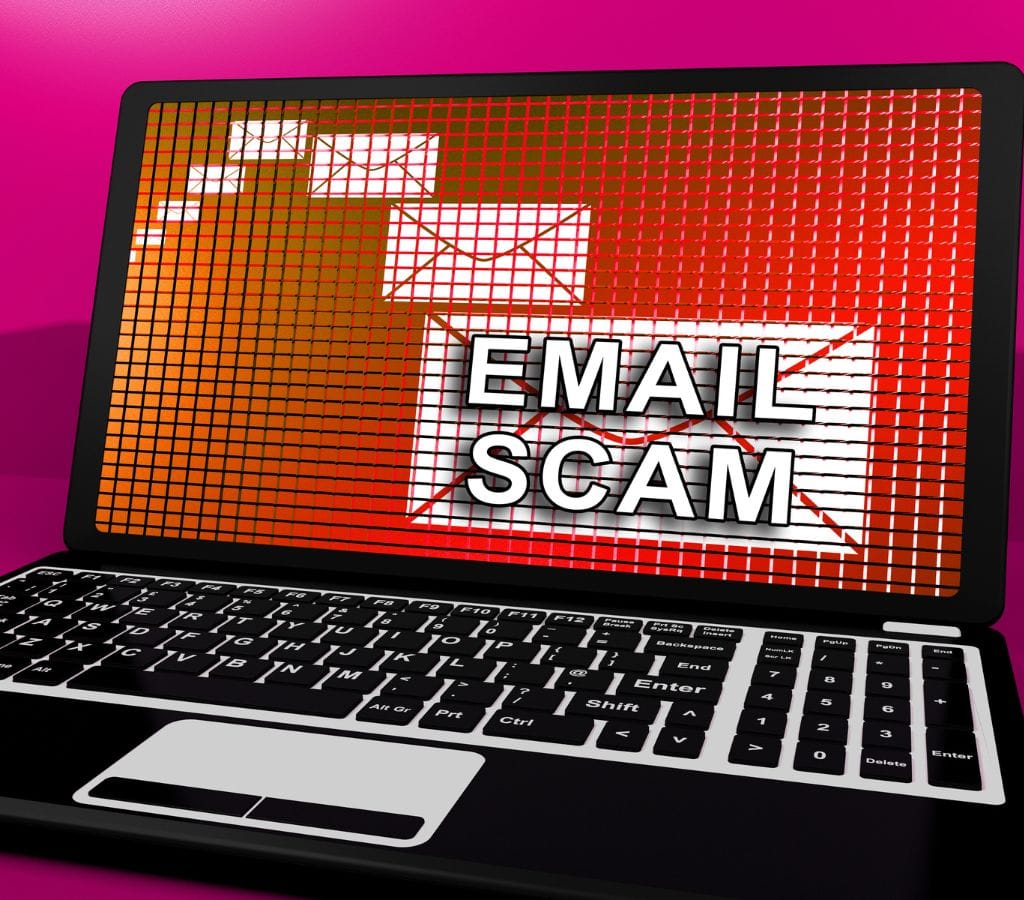With the rise of email scams and phishing attempts, it has become crucial to verify email addresses before replying them. So, we will delve into the importance of understanding email scams, the telltale signs of a fraudulent email, and the tools and methods of how to check if email is valid. By learning how to spot red flags and using the right email verification techniques, you can protect yourself from falling victim to online scams and protect your personal information.
How to Check if Email Address is Valid?
There are several tools and methods for checking the validity of an email address to help you ensure the sender is real. These tools give you useful information about where an email came from and how trustworthy it is so you can decide for yourself whether to trust it or not. So, we will discuss some of the best email checker tools for ensuring an email address is valid.
1. Using Email Checker
Email checker are websites that look at and verify email addresses to see if they are real. These services use different methods, such as checking the email address's syntax and style, making sure the domain's DNS records are correct, and checking the email address in real-time against known email databases. The following list is some popular email verification services:
- MailboxValidator: This service verifies email addresses by checking the syntax, the domain, and the presence of the mailbox.
- ZeroBounce: ZeroBounce offers email verification services that include finding fake, disposable, or abusive email addresses. They also offer other data enrichment features.
- NeverBounce: NeverBounce checks and validates email addresses in real-time to make sure they are valid, current, and safe to send emails to.
These email validator make it easy to quickly check if an email address is valid and make smart choices about replying to emails.
2. Checking Email Headers
Email headers have useful information about where an email came from and how it got to its destination. Simply by looking at the email headers, you can figure out if the sender is real. In order to see the email headers, go to the properties or settings of the email and find the choice to see the full headers. Find the following details:
- Sender IP Address: The IP address in the email lines can help you figure out where the email came from and what country it came from. You can also use IP lookup tools to find out if the IP address is linked to known scams or to real sources.
- Domain Authentication: Domain authentication methods such as SPF (Sender Policy Framework) and DKIM (DomainKeys Identified Mail) may be listed in email labels. These methods ensure that the email comes from a legitimate website.
By looking at the email headers, you can learn useful things about where the email came from and how real it is.
3. Using Reverse Email Lookup
Reverse email lookup services allow you to investigate the details associated with an email address. When you enter the email address into these sites, you can find public records such as the owner's name and social media profiles that are linked to the address. So, here are some popular reverse email lookup services:
- Spokeo: This is a full-featured people search engine that can be used to do a reverse email lookup and find out about the owner of an email address.
- Pipl: Pipl is a powerful people search engine that can help you find business information, social media profiles, as well as other information linked to an email address.
By using reverse email lookup services, you can learn more about how real and trustworthy the sender is. You can also make sure an email address is real and avoid falling for scams or phishing efforts by using these email checker services.

Why Verify Email Address is Important?
Email verification is crucial in protecting yourself from falling victim to fraudulent schemes. So, we will explore the importance of understanding email scams and the reasons why checking email validity is necessary.
The Evolution of Email Scams
Nowadays, email scams have become more complex and harder to spot. Cybercriminals use a number of methods to deceive users into disclosing private information or taking security risks. Such scams can include imitating real companies, making up stories, and using psychological tactics to induce people to respond.
Risks of Falling for Email Scams
If you fall for email scams, you could lose money and have your name or data stolen. Phishing emails can be used by hackers to get personal information such as usernames, passwords, credit card numbers, and more. They may also try to trick people into downloading malware or ransomware, which can damage their devices and make their digital security less safe.
Email Verification Benefits
It is important to check if email is valid because it lets you see if the sender is who they say they are. Ensuring an email is real is the best way to avoid responding to fake messages and keep yourself safe. Email verification also helps with:
- Protects Personal Information: Ensures correct email addresses prevent unauthorized access to private data.
- Avoids Financial Loss: Helps avoid falling for financial scams and unauthorized payment disclosure.
- Prevents Malware Infections: Identifies phishing attempts and prevents harmful attachments or malware links.
- Keeps the Internet Safe: Check if email is valid is a good way to protect yourself against scams.
The following part will discuss how to spot email scam and the tools and techniques you can use to check if email address is valid. By being alert and taking action, you can stay safe online and one step ahead of scammers.

Signs of an Email Scam
Finding the telltale signs of an email scam is a key part of checking if an email address is valid or not. Scammers often use a variety of tricks to trick people and get them to do things that could put their security at risk. So, we will talk about some common signs that can help you spot an email scam and stay away from them.
1. Unfamiliar Sender Information
Unknown source information is one of the first signs that an email might be fake. So, pay close attention to the email address and display of the sender's name. Scammers often use email addresses that look like they come from real companies, but if you look more closely, you might find small mistakes or misspellings. Watch out for emails from sites you don't know, or that seem fishy; they could be signs of fraud.
2. Suspicious Email Content
Email scams often have suspicious content. So, keep an eye out for these warning signs:
- Urgency: Scammers use urgency to prompt immediate action, such as if your account is at risk or to claim a prize.
- Poorly Written Greetings: Legitimate businesses usually call people by name.
- Threats or Demands for Personal Information: Scams may demand personal information such as passwords, social security numbers, or banking details.
3. Unexpected Attachments or Links
Often, email scams include files or links that you didn't expect. These downloads might look like important papers, bills, or even files infected with malware. When you receive attachments or are told to click on links, be careful, especially if you didn't expect them or if they don't make sense.
4. Grammar and Spelling Mistakes
Many email scams have spelling and grammar errors that are easy to spot. Legitimate businesses generally follow professional communication rules, and emails are carefully checked for errors. So, if you see a lot of mistakes or typos, it could be a sign that the email is a scam.
5. Suspicious Requests for Money or Personal Information
Scammers often try to trick people into giving them money or personal information. So, be wary of emails that ask for money, wire transfers, or personal information such as your social security number or bank account information. Legitimate businesses usually use safe ways to do business like this and don't ask for private information via email.
Be careful and notice these signs to avoid email scams. In the next part, we'll discuss the different tools and methods you can use to check if an email is valid and keep yourself safe online.

How to Respond to an Email Scam?
It can be scary to get email scams, but you need to react correctly to protect yourself and stop more harm. So, here are the steps you should take when you get an email that you think is a scam. By following these steps, you can keep yourself safe online and lower your risk of falling for scams or phishing attempts.
1. Don't Click on Links or Download Attachments
It's best not to click on links or download files in an email that makes you suspicious. There's a chance that these links or files contain malware or take you to fake websites that want to steal your personal information. Instead, do what's next to find out more about how real the email is.
2. Reporting the Email
Most email service providers let you report suspicious emails, such as spam or phishing attempts. Your email app should have a "Report" or "Spam" button. Click that to let your email service know. Reporting the email helps them find possible scammers and take action against them. This will also keep other users from falling for the same tricks.
3. Contacting the Supposed Sender Directly
If the email claims to come from a real person or company, but you're still not sure if it is, you should contact the sender directly. Use contact information from a reliable source, such as their official website or a route of communication that has already been set up. Tell them about the email you got and ask if it really came from them. They can tell you if they send the email or if any ongoing scams use their name.
4. Trusting Your Instincts and Ask for Help
You should believe your gut and ask for help if you're not sure what to do or need more direction. Talk to your IT department, a professional in hacking, or a family member or friend you trust who knows a lot about online safety. They can give you information and advice, or they can help you figure out what the best thing to do in a given scenario.
5. Deleting the Suspicious Email
After you have reported the email, talked to the supposed sender, and asked for help, it is usually best to delete the suspicious email from your inbox and trash folder. This keeps you from accidentally responding to the email again and also eliminates any risk that might come with it.
These methods can help you respond to suspicious emails, avoid email scams, and protect your personal information and online safety.

Preventive Measures to Avoid Scams
Taking preventative steps is very important if you want to stay safe online and avoid falling for email scams. Being aware and following best practices will reduce your risk of scams and phishing. So, we will discuss some of the most important things you can do to keep your online safety safe.
1. Making Sure Your Email App is Up to Date
When you keep your email app up to date, you get the most recent security patches and defences against new threats. Set your email app to send you updates automatically or check for updates every so often. Keeping your email software up to date can help protect you from security holes that scammers might use.
2. Installing Anti-phishing Software
You might want to get anti-phishing software for your gadgets. These tools can find and stop phishing efforts, which gives you extra protection against scam emails. Anti-phishing software looks at emails' text, links, and files to find possible scams and warn you before you click on them.
3. Changing Passwords Often
An easy and effective way to protect yourself is to change your email passwords often. Make sure each password is safe and unique by using a mix of letters, numbers, and special characters. If you don't want people to guess your name or date of birth, don't use them. Changing your passwords often makes it less likely that someone will get into your email account without your permission.
4. Using Two-Factor Authentication
Two-factor authentication makes your email account even safer by adding an extra layer of protection. Along with your password, you must also provide a second proof factor with 2FA. This could be a unique code sent to your phone. This makes it much less likely that someone will get in without your permission, even if your password is stolen.
5. Being Cautious of Suspicious Emails
Always be sceptical and be careful when dealing with emails, especially ones from people you don't know or that seem sketchy. Be careful of emails that immediately ask for personal information, money, or action. Use the above methods to verify the email, and don't hesitate to report or ask for help.
6. Educating Yourself and Spreading Awareness
Keep up with the newest email scams and fake attempts. Learn what the most common signs of a fake email are and tell your friends, family, and coworkers about them. By making people aware, you help make the internet a safer place for everyone.
In conclusion, you can protect your personal information and internet safety and make it much less likely that you will fall for email scams. Also, remember that the best way to keep your online profile safe is to stay alert and take action. Join EmailGum Now!

